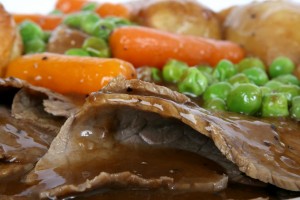4 Essential Steps To Assisted Living Menu Planning
The quality and taste of food in assisted living facilities is one of the primary complaints residents have. How can your team prepare a menu that utilizes high quality foods and fits within your appropriated budget? Consider these 4 essential tips to prepare a quality meal plan that residents will love while saving your time and money.
1. Organization Is Key: Planning meals can be a tedious task, and requires organization with precision. Meet with team members who are involved in the purchasing, preparing and serving process to help plan and provide feedback on the previous menu. This will allow team members to provide valuable insights into how meals are being received and eaten.
Things to do:
- Identify meals that were not received well and eliminate those from the upcoming menu. This is a key element of showing residents that you care and are in touch with their thoughts and feelings where food is concerned.
- Consult your dietitian in the planning process. This will ensure the menu is equipped with the ability to adapt to current and incoming residents dietary needs. It is crucial that the menu meets all health and regulatory needs. A custom menu will allow you to make changes during the month while new residents are joining the community.
- Set aside dedicated time to discuss and adapt the menu according to new needs and fluctuating food costs
- Utilize printed or digital calendars to organize your meal plan, and give residents access to the plan on bulletin boards
2. Seasonal Meals:
Planning meals around seasonal items can help cut food cost and ensure that produce items are being served when they are at their freshest. This is an essential step to improve the quality, nutritional value and taste of food. There are dozens of guides online that can help highlight seasonal items, with ideas on how to cook with them. This is also a great way to provide nostalgic meals that residents will love, reminding them of meals they ate at home with family or for special occasions.
3. Focus On Residents: While this suggestion at it’s core seems simple, here are a few suggestions you may not have thought of.
- Consider Culture: As the United States population continues to diversify so does its elderly. Consider adding meals to your menu that will add variety and give residents the opportunity to enjoy cultural food. Consider your geographic location and take advantage of local foods that your residents love.
- Presentation: Take a good look at how your new plan can increase the appeal and presentation of foods. Utilize produce to add color and aroma to food. Taking into consideration how the look and smell of food will increase the amount eaten. Get creative with tough to present food like pureed meals, helping them look and taste amazing will help increase the appeal for residents.
- Ask for feedback. Knowing how residents feel about the food they are eating is a valuable tool which will allow you to make changes that will directly impact the level of comfort of residents
4. Get Help: Menu planning is a primary pain point for facilities. Utilize industry resources to your advantage and see what your contemporaries are doing. Share your thoughts and get feedback from other professionals in valuable communities like this one. Streamline this process with tools like our intuitive assisted living menu planning software, which helps you organize menus for months at a time. Select meals that are delicious and fit your budget with a cost per meal breakdown. Once planned it generates a shopping list with all of the required ingredients and quantities, these features can help you reduce waste and save time, you can learn more about it here.
While planning a quality menu can take time and resources the process can be simplified utilizing the tips above. Do you have any strategies that have worked for you, please share your thoughts in and ideas with a comment.
by Jared Oldham

